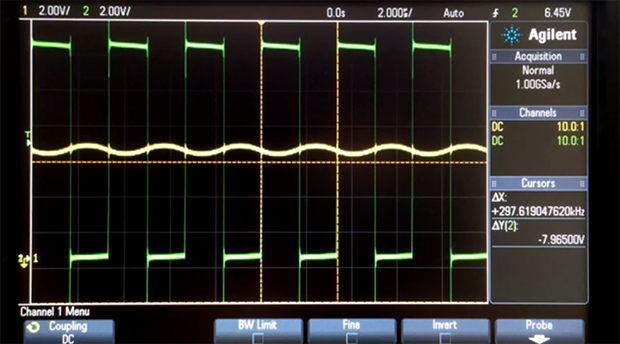
Hang around in any of the many guitar or audiophile forums or discussion boards for long enough, and eventually you’ll come across the arguments over amplifier topologies. One of the more interesting and useful of these classes of amplifier is class d – they’re extremely efficient and when well designed can sound pretty good. [Afrotech] is here to show you how they work, and how to build a 15 Watt amp using a $3 class d amplifier chip.
The very definition of an amplifier is taking a low power signal and transforming it into a high power signal. A great way to modulate a high power signal very quickly is by modulating a square wave with pulse width modulation. A class d amplifier takes a low power input signal, uses it to modulate the duty cycle of a high power square wave, and with a little filtering, amplifies the low power input.
To demo this, [Afrotech] used TI’s TPA3122 class d amplifier chip. It’s a pretty cheap chip for being a 15 Watt stereo amplifier, and the circuit is simple enough to build on a breadboard. With a few caps, resistors, and a pair of inductors, [Afrotech] built this one-chip amplifier that’s capable of powering some pretty big speakers. It’s also very efficient – no heat sink required.
Although class d amps are extremely efficient. there are a few people out there that say because the amplifier is basically a filtered square wave, you’ll be able to hear a difference in the audio over class a or class ab amplifiers. This led to the development of class t amplifiers, basically a class d amp with a higher switching speed (Megahertz for class t, a few hundred kilohertz for class d). Still, if you need a cheap amplifier for a DIY boombox or any other high power application, you could do a lot worse than a simple class d amp.
Continue reading “[Afrotech]’s Guide To Class D Amplifiers” →














